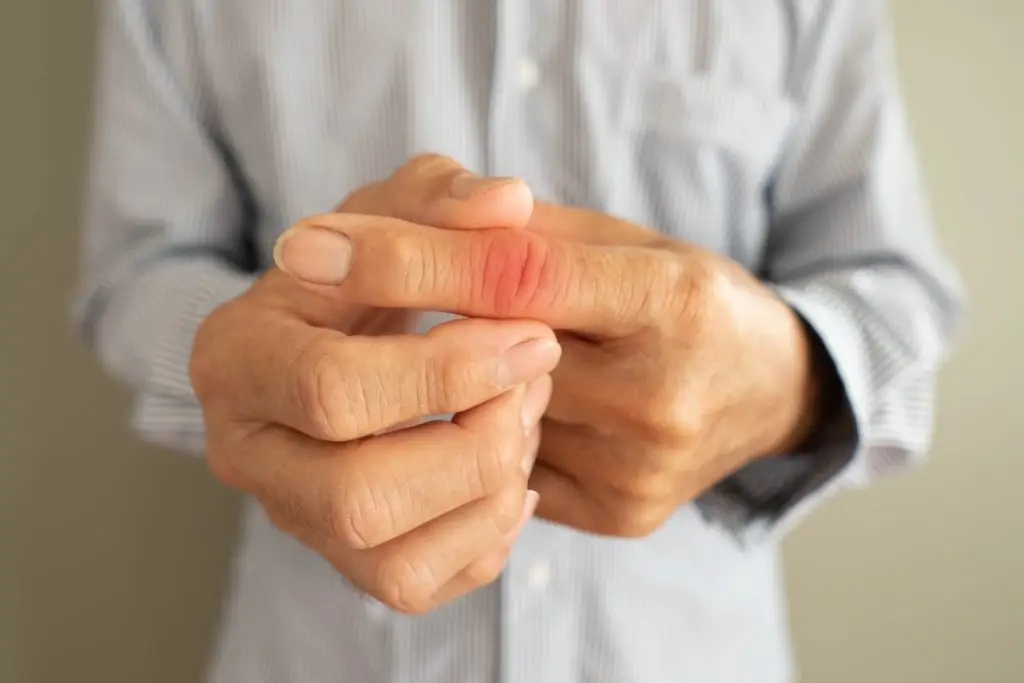Is your finger feeling stiff, locking, or getting stuck in a bent position? You may be suffering from trigger finger, a common yet frustrating condition that can significantly impact your daily life. From grasping objects to typing at a computer, trigger finger or trigger thumb can turn simple tasks into painful challenges. But here’s the good news—physical therapy can be a powerful and effective route to recovery.
What is trigger finger?
Trigger finger, formally known as stenosing tenosynovitis, is a condition where one of your fingers or thumbs catches or locks in a bent position, rather than moving smoothly through your finger’s normal range of motion. It happens when the narrow spaces through which tendons pass to your fingertips become inflamed.
These protective sheaths normally provide a gap for the tendons to slide past smoothly when bending each finger, but when they’re inflamed, they expand, causing friction or stopping movement altogether.
As a result, your finger might bend with resistance and then suddenly “pop,” like a trigger being pulled and released—hence the name.
Mild cases of trigger finger sometimes resolve on their own with rest, over-the-counter anti-inflammatory medication, and minor lifestyle adjustments. However, for persistent or severe cases, physical therapy is often recommended as a first step to prevent worsening symptoms and avoid surgical intervention.
Causes and risk factors for trigger finger
Trigger finger most often affects older adults and is more common in women. There are a few known risk factors that can increase your likelihood of experiencing trigger finger, including:
- Repetitive motion (tool use, computer use, etc.)
- Osteoarthritis
- Carpal tunnel syndrome
- Autoimmune disease like rheumatoid arthritis or diabetes
How do you treat trigger finger with physical therapy?
Physical therapy for trigger finger primarily focuses on reducing pain, improving mobility, and strengthening the muscles and tendons in your hand. Through targeted exercises and stretches, a therapist can help you regain full motion and reduce inflammation without invasive procedures.
Many repetitive-use conditions like trigger finger are often affected by the way we use those joints daily. By slightly altering your grip, using assistive tools, and improving strength, you can see meaningful results.
Trigger finger stretches
Gentle stretching for trigger finger can help reduce stiffness and improve flexibility. Stretches can help recalibrate your tendons and finger joints to “remember” their full range of motion and include:
- Finger extension stretches
- Finger spread stretches
- Palm stretch
Trigger finger exercises
Some of the most effective physical therapy for trigger finger and trigger thumb come from gentle exercises that gradually repair the strength and dexterity of your affected hand. The specific exercises that will work for you will be highly specific to your condition, but common trigger finger physical therapy exercises include:
- Ball squeezes
- Finger walking exercise
- Resistance exercises
Working with a physical therapist rather than performing these exercises on your own ensures that you get the most effective stretches and exercises for your specific experience of trigger finger, and protects your hands from unintentional damage as you do them.
Arthritis and trigger finger treatment at Peak Performance
Life shouldn’t stop because of stiff or painful fingers. At Peak Performance, we specialize in personalized care designed to target your unique concerns. Whether it’s pain, locking joints, or loss of dexterity, our team of experienced physical therapists is here to help you get back to doing what you love most—without discomfort or limitation.
Get back to your normal routine with less pain in your hands and fingers by calling a nearby Peak Performance clinic or by requesting an appointment online today.

